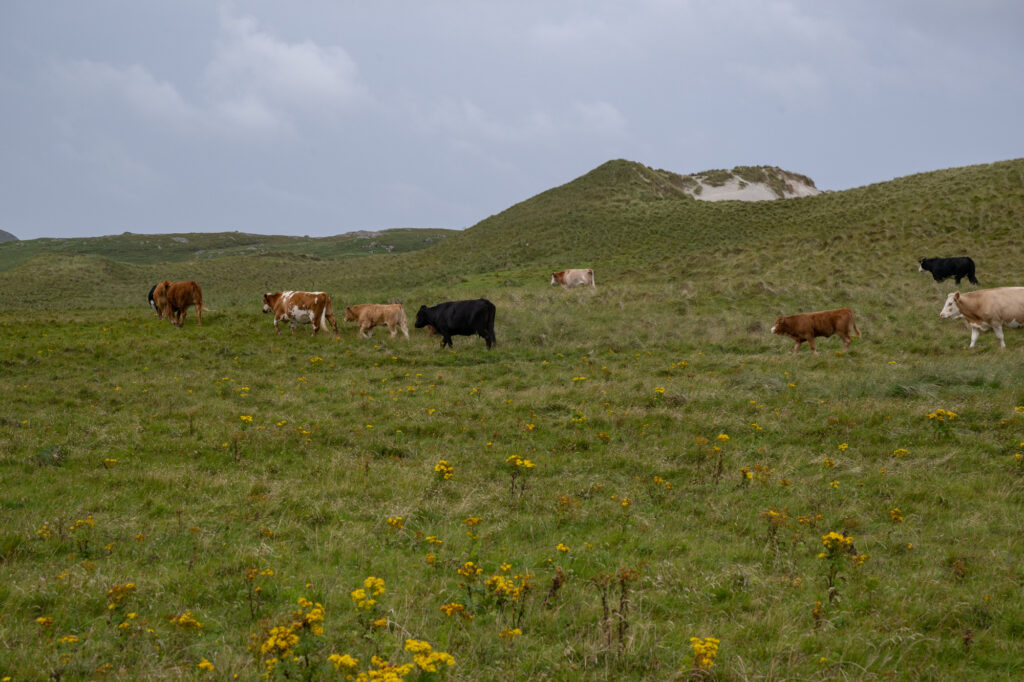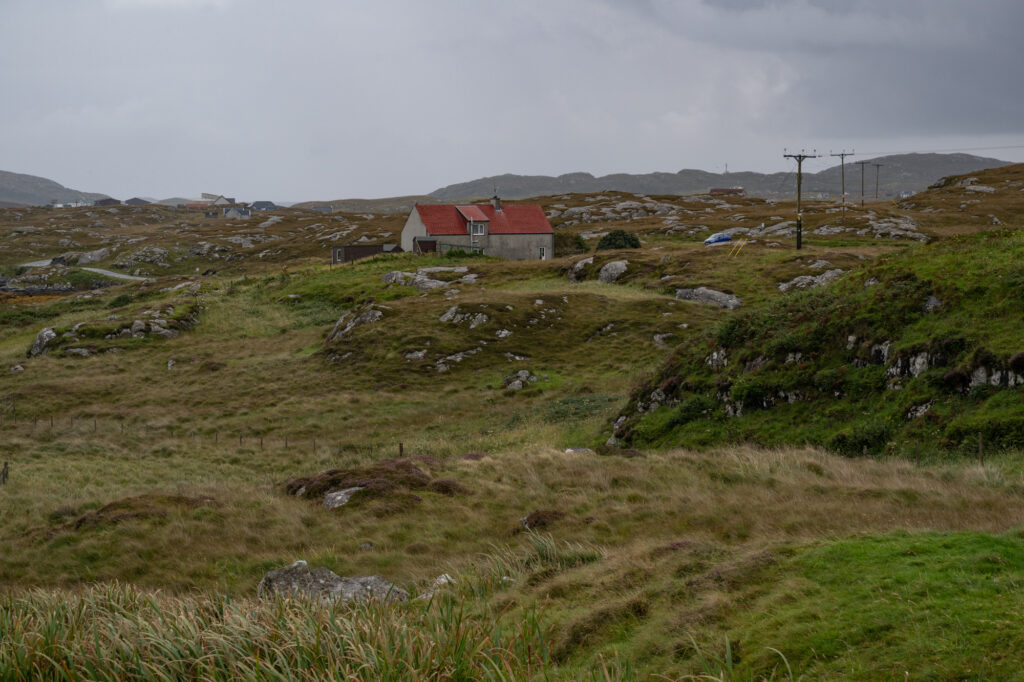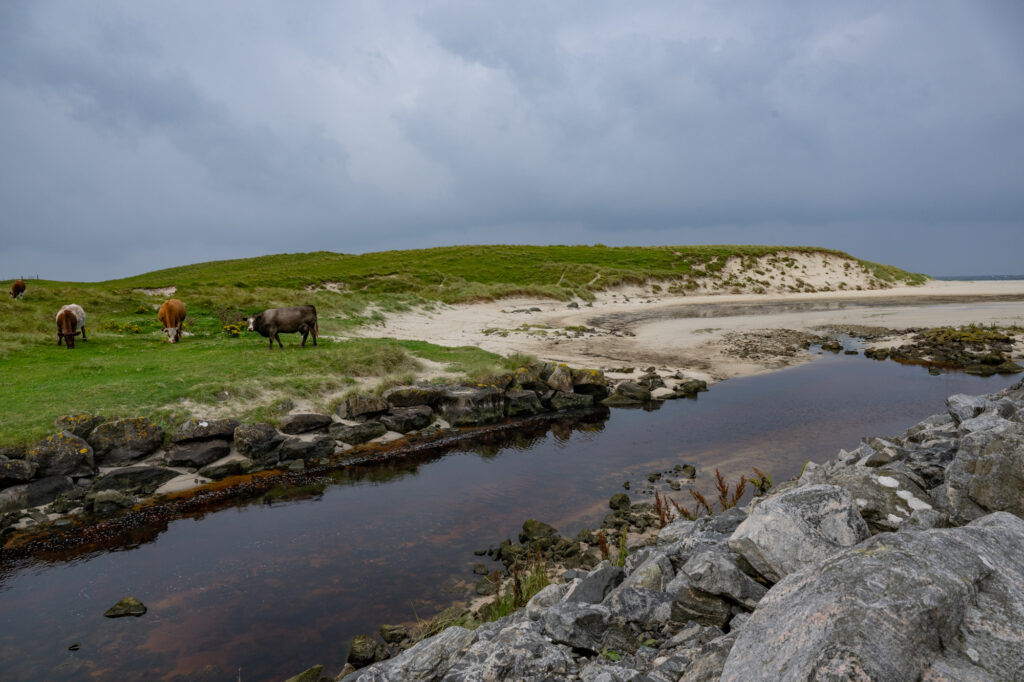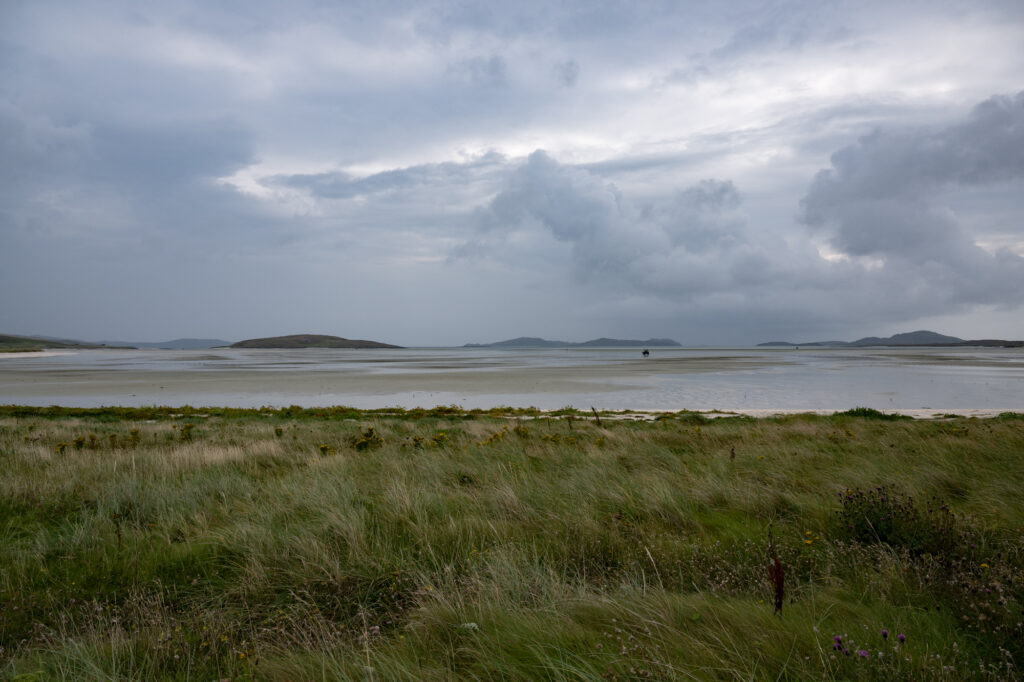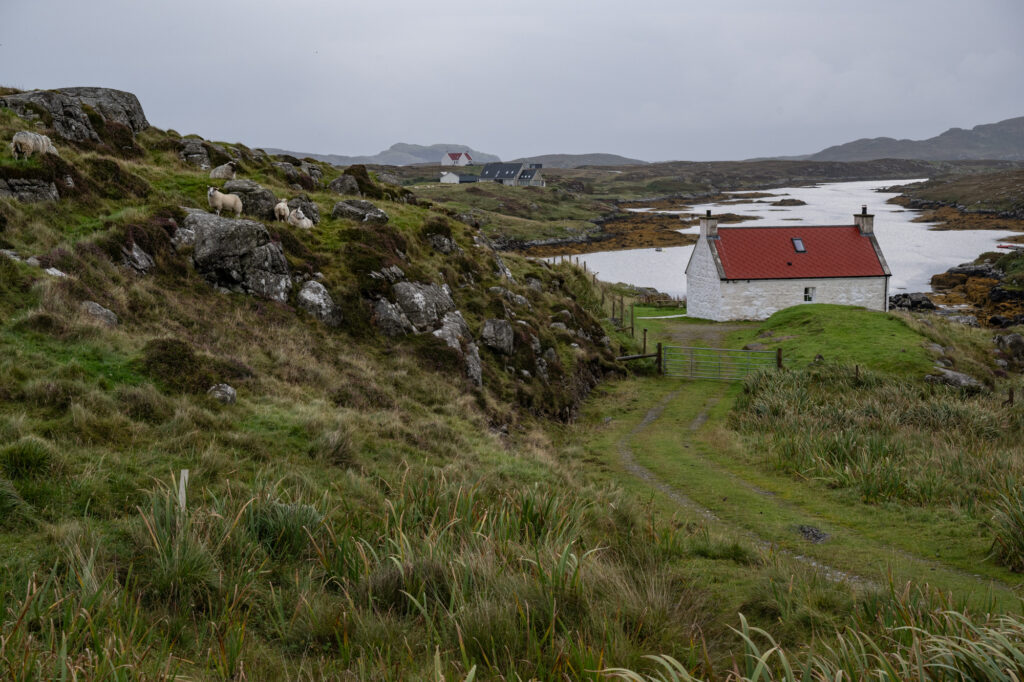On this, my last day on Barra it seems only fitting to talk a bit about this island and its ties to the Lords of the Isles. Barra was a haven for Viking pirates, who launched fierce plundering raids in all directions from these islands. It is not hard to visualize Viking boats sailing in on the waters around the island. Mid-ninth-century Vikings drove out the local Celtic rulers and used Barra as a plundering base, while still tied to their Norse relatives in Norway and Iceland. In the tenth century, Barra was part of the mainstream of Norse culture . In the twelfth century there rose a new and successful Gaelic dynasty in Argyll, the family of Somerled mac Gille-Brigde . In a series of campaigns in the Isles in the 1150s Somerled sought more territory than that which he held in the mainland territories of Morvern and Ardnamurchen in Argyll. He thus acquired Kintyre and the islands of the Firth of Clyde, Islay, Mull and the southern Hebrides, and Barra and the Uists in the north. These islands became part of the lordship of Somerled, and they were eventually passed on to his descendants, the Lords of the Isles.
Barra is known for its natural beauty, history, and unique airport. The Atlantic shores are dressed in dune-backed beaches, abundant machair and croftland. Cows dot the landscape more than sheep it seems and are even found on the beaches. The interior of the island boasts lochan-scattered moorland and rugged hill country. It is sparsely populated and its main road, which winds around the island, is a narrow, single track roadway that follows the shoreline. Its white sandy beaches often call to mind the Caribbean. It offers many great walks into the hills or along the shore through the machair and onto the beaches which seem to stretch for miles. One can see why the Lords of the Isles wanted this for their territory. It is truly a place apart.
